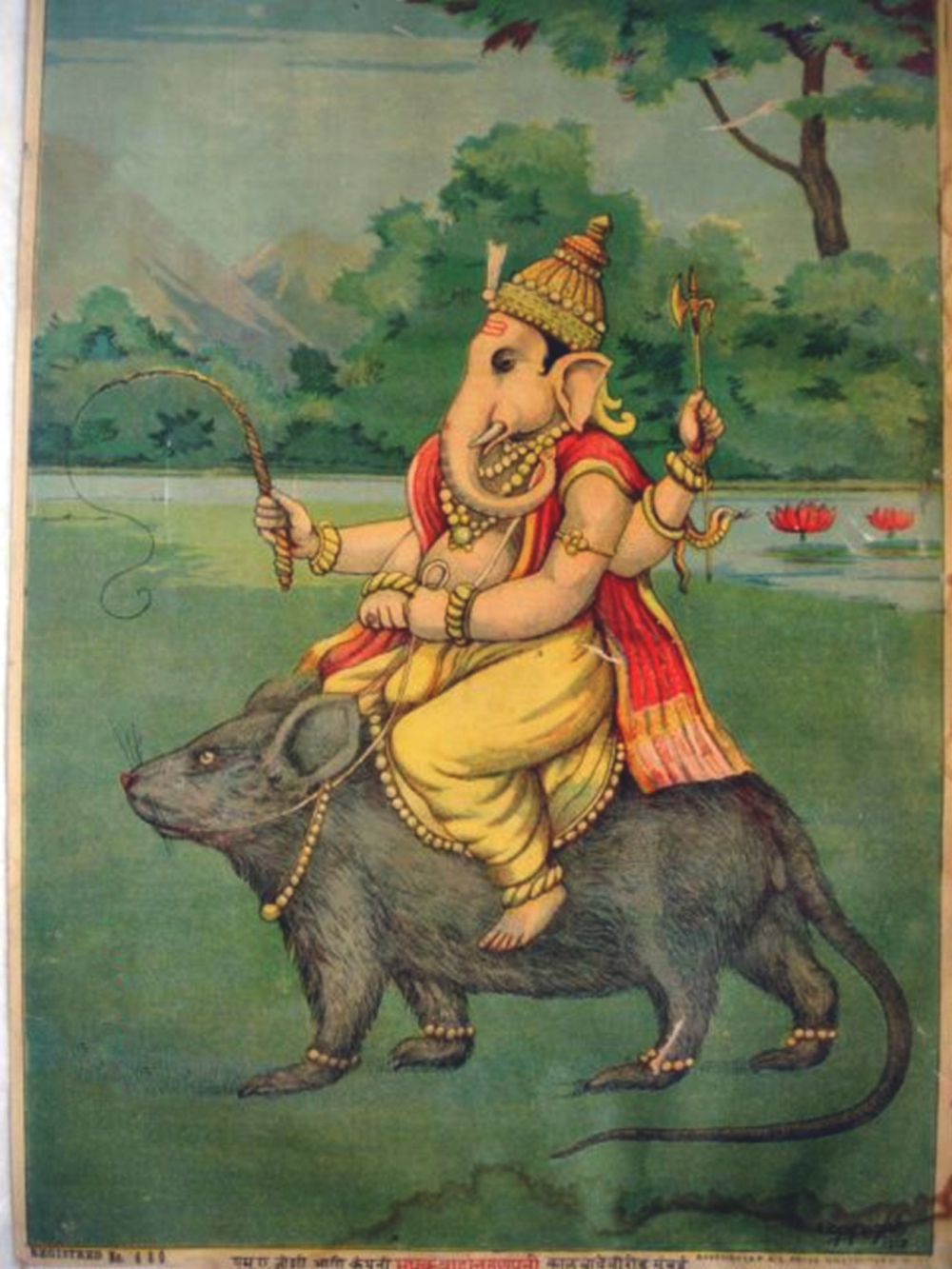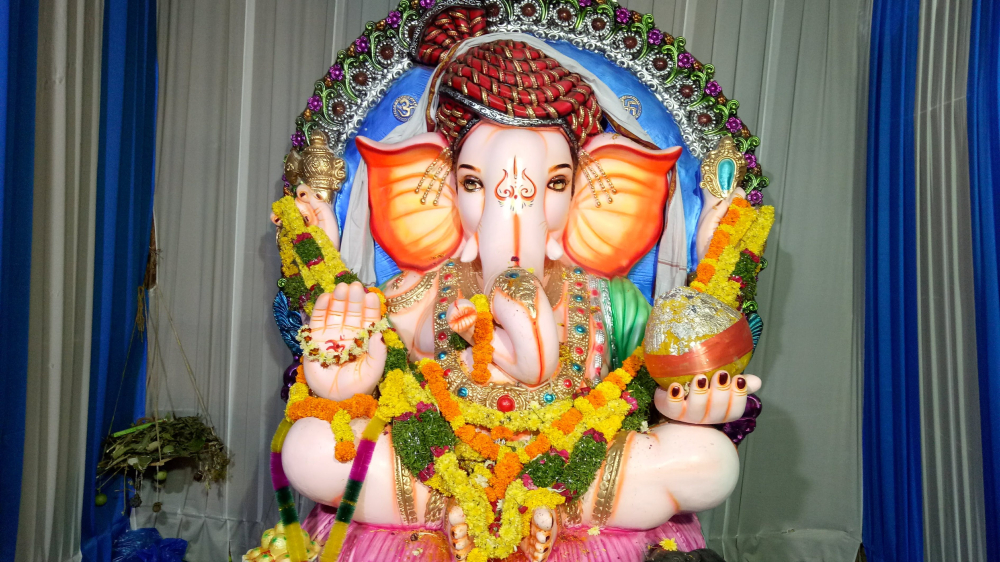Ganapati, Shambhutaijasa, Gaurinandana, Gajanana are just a few of Ganesha’s names. We deliberate on some of his names that are also his forms. (Photo courtesy: Rob Hurson/Flickr)
From the brief Om Shri Ganeshaya Namah to more elaborate prayers in Sanskrit, Lord Ganapati is honoured numerously with Puranic mantras, thousands of hymns, panegyrics, beeja, moola and Devata Gayatri mantras. Ganesha is Prathameshvara, the first lord. Popular as Ganapati, he has several names.
His birth alone is the stuff of legend. Originated from his mother Gauri, he is Gaurinandana. He is Vinayaka because he is sovereign, born nayaken vina—without the intervention of the nayaka, or husband. Shambhutaijasa is he when created by Shiva from his luminosity, sans Parvati. As Ganesha, his body is given by his mother, and life, by his father. Thus, he is the first movement towards creation when Shakti (prakriti) and Shiva (purusha) unite. He is the elephant-countenanced Gajavadana, one through whose mouth emerges all creation—the namarupa, names-forms, of Ganesha are verily infinite.
It is beyond the ken of our ordinary intelligence to know the essence of Ganesha. As Tulsidas writes in Ramacharitamanasa, ‘jinh ke rahi bhavana jaisi, prabhu murati tinh dekhi taisi’. Like his mouse, one can try to dig deeper and realise the lord to the degree one can or wishes to.
We deliberate on some of his names that are also his forms, reflecting the essential qualities, which his devotees hope to awaken in themselves by worshipping him.
Aakhuratha

Among the many epithets of Ganesha is Aakhuratha: one whose chariot is the mouse. He is one who tames the mind.
A Sanskrit compound made by aakhu and ratha, Aakhuratha is less popular, perhaps, compared with Mushakavahana but with similar meaning. In his earliest mentions, Ganesha is without a mount. The Ganesha Purana cites him riding a mouse as Gajanana when for the first time the endearing, corpulent deity, intrigues us with his appearance on a diminutive rodent.
Equally enigmatic is the mouse who becomes Ganesha’s mount in multi-versioned stories. In the Dvapara Yuga (second of the four yugas)—as mentioned in the Ganesh Purana—Vinayaka is born as Gajanana to Shiva and Parvati to ‘kill’ the demon Sindura. Cursed by a great sage for his heedlessness, a celestial being Krauncha incarnates as on earth as a mouse. He will be freed of the curse, the sage tells the contrite Krauncha, when Gajanana rides him. The gigantic mouse wreaks havoc in a sage’s ashrama whereupon he is subdued in battle by Gajanana. The mouse becomes a willing mount, riding which his master ‘kills’—or assimilates—Sindura and acquires the crimson complexion.
John A. Grimes, in his book Ganapati: Song of the Self, mentions a Pauranic tale, which tells us “when all the gods offered Ganesha presents after his name-giving ceremony, the Earth gave him a mouse to serve as his vehicle.”
Related | Ganesh Chaturthi and Carnatic Music
The carrier of Ganesha also carries several occult truths. It symbolises lower mind, greed and unrestrained senses. Derived from mush, which variously means ‘to rob, enrapture, and obscure light or intellect’, mushaka, thus, becomes a ‘little hoarder’ or ‘thief’. The mouse—with its small mouth and sharp teeth—is voracious, robbing more than it can eat. So, with a seemingly insignificant desire that, stealthily, making its way into the mind of a man, may destroy him. Aakhuratha is the higher faculty of wisdom that rides over the desire-ridden mind. The thief can be tamed to become a friend.
Pillaiyar
Popular in South India as Pillaiyar, Ekadanta is the earliest known Sanskrit name of Ganesha. Both are derived from his appearance of having one tusk: where both danta and pella mean tooth and tusk. Pille in Tamil is ‘child’ and Pillaiyar means ‘noble child’. But some scholars believe ‘young of an elephant’ to be the original meaning of pille.
The suffix danta in Ekadanta comes from dantin is derived from the root dri-darshayati, to show. We may conjecture that the god has the symbolic single tusk: he is incisive, and a seer, perceives with the one spiritual eye.
Also read | Celebration of Togetherness: An Account of Teeja and Ganesh Chaturthi in Dhamtari
Although no legend earlier than the Puranas explains why Ganesha possesses only one tusk, many a story is told of the breaking of it. These include the ones around Ganesha’s battles with the Sage Parashurama and demon Gajamukha. The Shiva Purana tells us that when Shiva severs the head of Ganesha, who is fashioned by Parvati from the exudations of her body, Shiva places the head of a single-tusked elephant on Ganesha’s body. The better-told, however, is the one about his role as Veda Vyasa’s resolute scribe of the Mahabharata: he breaks a tusk to serve as his stylus when it snaps just as he is about to finish the writing of it. ‘The story lets us know that the resourceful knows no impediment.’
In his incarnation as Ekadanta, he is said to have vanquished Madasura—intoxicated by pride—that gods are ever harassed by. The sage Sanatkumar instructs them to propitiate Ekadanta. Describing the glory of Ekadanta, he says eka is the manifestation (maya) and danta, truth (sat). ‘Thus Ekadanta represents the Supreme Truth or Brahman that wields Maya’ symbolised by the tusk, in recognition of teeth as the most lasting or resilient property in the physical.
Modakapriya

‘Modakapriya mud mangala-data, vidya-varidhi buddhividhata.’ Tulsidas invokes him as Modakapriya, the lord who loves the modaka (sweetness). The word modaka derives from the Sanskrit root mud—joy or delight.
Modaka is, literally, a sweet ball made with different variety of grains, and found variously in Ganapati's trunk, hand, and/or a bowl nearby. Ganesha’s trunk that invariably turns towards the modaka he holds is constantly looking at the delight that is reflective of the state of bliss. And bliss is the final beatitude that he gives to those who approach him.
Also see | Ganesh Chaturthi
Given that the levels of joy or bliss vary for different people, the Lord is also the provider of material pleasures and accomplishments for those who ask for it. But he holds out the ‘enticement of giving what one wants, so that ultimately one will want what he has to give,’ writes Grimes.
Esoteric traditions, such as the Ganapatyas, behold the modaka as the germ of life. The round belly of the deity is said to be symbolic of the vast expanse of space, large enough to hold thousands of modakas as representing all the human seeds in the universe.
This article was also published on The Statesman.













